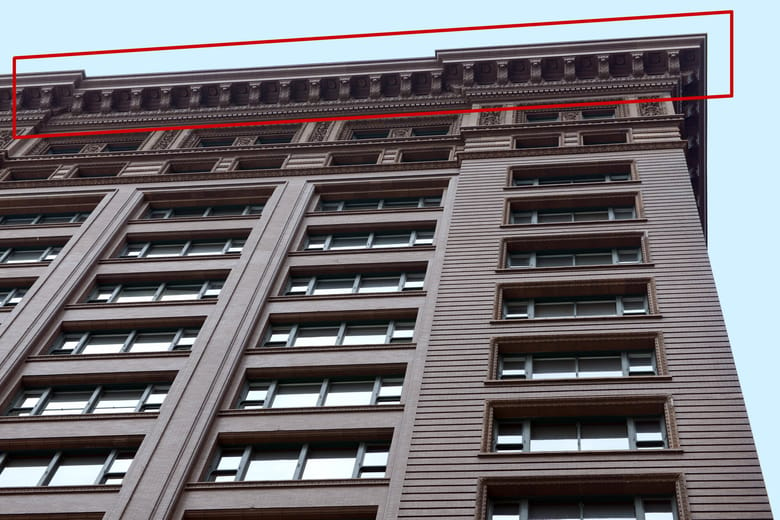Cornice
Marquette Building
CORNICE: A decorative band across the top of a building that projects beyond the wall.
In architecture, a cornice is an ornamental molding or projection that runs along the top of a building or structure, typically just below the roofline or at the transition between the wall and roof. Cornices serve both decorative and practical purposes; they add visual interest and can help direct water away from the building's facade, preventing erosion and damage.
The word "cornice" originates from the Italian word "cornice," meaning "ledge" or "molding," which is derived from the Latin "cornix," meaning "crow," referencing the ledge-like shape. The concept of the cornice dates back to ancient architecture, where it was used in classical orders such as Doric, Ionic, and Corinthian styles to provide a decorative and structural cap to buildings.
In Chicago, notable examples of buildings featuring prominent cornices include the Chicago Board of Trade Building, with its distinctive, detailed cornice that complements its Art Deco design. The Tribune Tower also showcases an elaborate cornice that enhances its neo-Gothic style. Additionally, the Marshall Field Building, now Macy's on State Street, features an ornate cornice that reflects the grandeur of Beaux-Arts architecture.
Cornices are integral in defining the character of a building, offering both functional benefits and contributing to the overall aesthetic.























